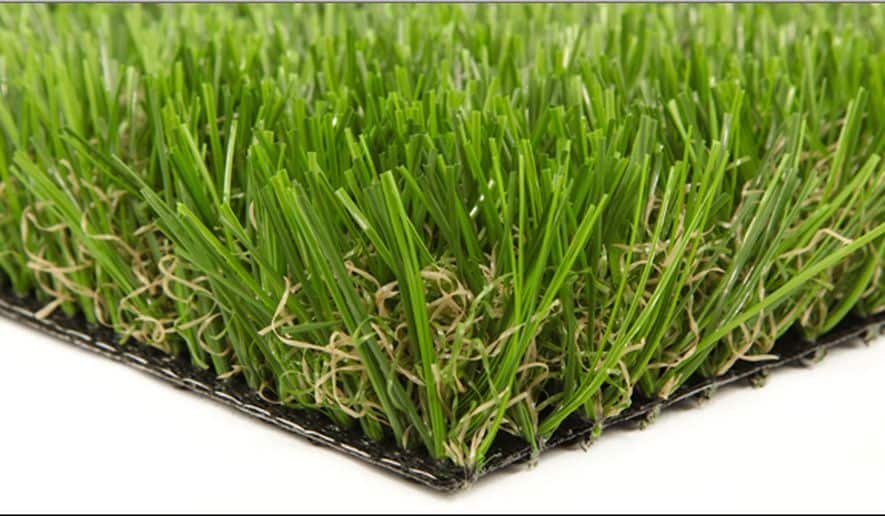If you think natural sod grass is greener than turf grass, you ought to think again. It might as well be another artificial grass myth. If being green means being environmentally conscious while saving and protecting natural resources, NewGrass synthetic lawn gets the green vote.
Why Turf Grass is Greener
Think about the amount of water turf grass requires. Traditional turf lawns like Kentucky Bluegrass, Fescue and Bermuda grass love to drink. In fact, they account for as much as 60% of homeowner water usage. Yet, NewGrass requires no water. That’s a major consideration today, because places like California face ongoing drought conditions.
Also, think about the amount of gasoline it takes to fuel a mower. This not only costs money, but devours a non-renewable resource. In addition, it spews carbon gas emissions into the air. Even if you use an electric mower, well, you’re using electricity usually generated by coal or nuclear fuel. You never need to mow a NewGrass lawn.
What about keeping your lawn free of weeds and insects? Keeping a lawn well-maintained usually means applying synthetic fertilizers, poisons and other chemicals green. These don’t stay on the lawn, but often find their way into the storm water runoff. A properly installed NewGrass artificial grass requires no insecticides or herbicides.
Even the U.S. Green Building Council thinks synthetic lawns like NewGrass are greener than turf grass. The Council includes artificial grass in its suggestions for landscaping alternatives that can help a building project meet Leadership in Energy and Environmental Design (LEED) certification, which qualifies builders and cities for tax credits.
NewGrass by the Numbers
Yet, a NewGrass synthetic lawn installed in Southern California, yields fast returns. According to our NewGrass president, returns can occur in as little as 4 1/2 years. This is based on actual customer data. In fact, one NewGrass family in the Los Angeles area did an analysis. This is what it costs to maintain their 600 square foot traditional lawn.
- Watering ($.009 per gallon, estimating 50 gallons per square foot annually): $270
- Gardner ($145 per month total yard; $40 allocated to backyard): $480
- Fertilizer ($6 per month average): $72
- Weed killer ($4 per month average): $48
- Bug killer ($6 per month average): $72
- Irrigation repair/ parts ($3 per month): $36
- Tear out and re-sodding ($1.25 per square foot, or $750 every two years): $375
- Total Sod Lawn Maintenance Cost per Year: $1,353
Total Cost of Maintaining Sod Grass over 4.5 Years: $6,088
So this family recouped the cost of their turf grass install in 4 1/2 years. However, there is an environmental return on investment too. It is measured by a few factors. For starters, the amount of water it saves. Second, the amount of synthetic fertilizers and insecticides not entering our water supply. And third, and the carbon emissions eliminated when gas-powered lawn equipment isn’t used. So turf grass yields two types of returns!
If you want a lawn that is greener on more ways than one, contact NewGrass. We have everything you need!


